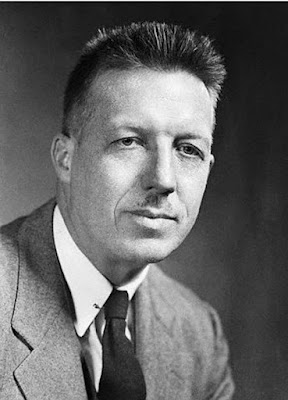And here is the second lecture by Dr Mandi..
The famous theory given by Douglas McGregor..Theory X and Theory Y.
The session talked on the two kind of employees.
What motivates employees to go to work each morning? Many people get great satisfaction from their work and take great pride in it; Others may view it as a burden, and simply work to survive.
This question of motivation has been studied by management theorists and social psychologists for decades, in attempts to identify successful approaches to management.
Social psychologist Douglas McGregor of MIT expounded two contrasting theories on human motivation and management in the 1960s: The X Theory and the Y Theory. McGregor promoted Theory Y as the basis of good management practice, pioneering the argument that workers are not merely cogs in the company machinery, as Theory X-Type organizations seemed to believe.
The theories look at how a manager's perceptions of what motivates his or her team members affects the way he or she behaves. By understanding how your assumptions about employees’ motivation can influence your management style, you can adapt your approach appropriately, and so manage people more effectively.
The famous theory given by Douglas McGregor..Theory X and Theory Y.
The session talked on the two kind of employees.
What motivates employees to go to work each morning? Many people get great satisfaction from their work and take great pride in it; Others may view it as a burden, and simply work to survive.
This question of motivation has been studied by management theorists and social psychologists for decades, in attempts to identify successful approaches to management.
Social psychologist Douglas McGregor of MIT expounded two contrasting theories on human motivation and management in the 1960s: The X Theory and the Y Theory. McGregor promoted Theory Y as the basis of good management practice, pioneering the argument that workers are not merely cogs in the company machinery, as Theory X-Type organizations seemed to believe.
The theories look at how a manager's perceptions of what motivates his or her team members affects the way he or she behaves. By understanding how your assumptions about employees’ motivation can influence your management style, you can adapt your approach appropriately, and so manage people more effectively.
- 1. Douglas McGregor's - Theory of Motivation
The eminent psychologist Douglas McGregor has given his theory of motivation called Theory X and Theory Y. He first presented his theory in a classic article titled 'The Human Side of Enterprise'. He treated traditional approach to management as 'Theory X' and the professional approach to management as 'Theory Y'. His theory refers to two sets of employees based on the perception of human nature. Here, theory X and theory Y are two sets of assumptions about the nature of employees. His theory is based on human behavior.
2. Theory X.
Theory X is based on traditional assumptions about people (employees). Here, the conventional approach of management is used as a base. It suggests the following features of an average human being/employee (assumptions about human nature):
2.1 Assumptions of Theory X.
- The average human being is inherently lazy by nature and desires to work as little as possible. He dislikes the work and will like to avoid it, if he can.
- He avoids accepting responsibility and prefers to be led or directed by some other.
- He is self-centered and indifferent to organizational needs.
- He has little ambition, dislikes responsibility, prefers to be led but wants security.
- He is not very intelligent and lacks creativity in solving organizational problems.
- He by nature resists to change of any type.
In the case of such employees, self-motivation is just not possible. They will work only when there is constant supervision on them. A manager has to persuade, punish or reward such workers in order to achieve organizational goals.
3. Theory Y.
Theory Y is based on modern or progressive or professional approach. Here, the assumptions about people i.e. employees are quite different.
3.1 Assumptions of Theory Y.
- Work is as natural as play, provided the work environment is favorable. Work may act as a source of satisfaction or punishment. An average man is not really against doing work.
- People can be self-directed and creative at work if they are motivated properly.
- Self-control on the part of people is useful for achieving organizational goal. External control and threats of punishment alone do not bring out efforts towards organizational objectives.
- People have capacity to exercise imagination and creativity.
- People are not by nature passive or resistant to organizational needs. They have become so as a result of experience in organisations.
- An average human being learns under proper conditions. He is also willing to accept responsibility.
- The intellectual capacity of an average human being is utilised partially under the conditions of modern industrial life.
4. Final Glance On Theory X and Theory Y.
Such types of people (employees) are self-motivated and McGregor recommends that they be motivated by encouraging participation so as to get team work. Theory Y assumes that people are not by nature, lazy and unreliable. They can be self-directed and creative at work, if properly motivated. It is for the management to unleash this potential in individuals (employees). Theory Y emphasizes creating opportunities, removing obstacles, providing guidance and encouraging growth. By using these tools, the management can integrate individual goals of employees with those of the Organisation.
The assumptions in Theory X and Theory Y are fundamentally distinct. Theory X is static, rigid, conservative and pessimistic. Theory Y is optimistic, dynamic, flexible and progressive. It suggests self direction and the integration of individual needs with organizational needs. On the other hand, more importance is given to external control imposed by the superior on the subordinate in the Theory X. - Next blog is soon to come!!

No comments:
Post a Comment